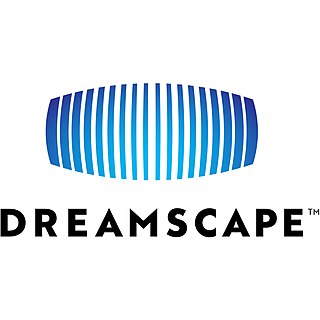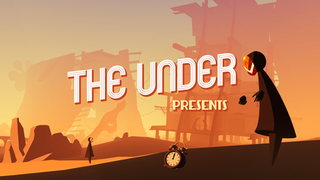
Robert Lowell Coover is an American novelist, short story writer, and T. B. Stowell Professor Emeritus in Literary Arts at Brown University. He is generally considered a writer of fabulation and metafiction.
Electronic literature or digital literature is a genre of literature where digital capabilities such as interactivity, multimodality or algorithmic text generation are used aesthetically. Works of electronic literature are usually intended to be read on digital devices, such as computers, tablets, and mobile phones. They cannot be easily printed, or cannot be printed at all, because elements crucial to the work cannot be carried over onto a printed version.

Immersion into virtual reality (VR) is the perception of being physically present in a non-physical world. The perception is created by surrounding the user of the VR system in images, sound or other stimuli that provide an engrossing total environment.

Immersive design describes design work which ranges in levels of interaction and leads users to be fully absorbed in an experience. This form of design involves the use of virtual reality (VR), augmented reality (AR), and mixed reality (MR) that creates the illusion that the user is physically interacting with a realistic digital atmosphere.

Brendan Andolsek Bradley is an American actor, director, producer, writer and VR performer. He is best known for portraying the advertising character Guy in radio and television commercials for Staples. He has been noted for his work in over 100 television and interactive projects for PBS, CBS, Legendary Entertainment, the Fine Brothers, Comedy Central, the video game Resident Evil: Village and others.
WebXR Device API is a Web application programming interface (API) that describes support for accessing augmented reality and virtual reality devices, such as the HTC Vive, Oculus Rift, Oculus Quest, Google Cardboard, HoloLens, Apple Vision Pro, Magic Leap or Open Source Virtual Reality (OSVR), in a web browser. The WebXR Device API and related APIs are standards defined by W3C groups, the Immersive Web Community Group and Immersive Web Working Group. While the Community Group works on the proposals in the incubation period, the Working Group defines the final web specifications to be implemented by the browsers.
Festival of International Virtual & Augmented Reality Stories (FIVARS) is a media festival that showcases stories or narrative forms from around the world using immersive technology that includes virtual reality, augmented reality, live VR performance theater and dance, projection mapping and spatialized audio. It is considered to be Canada's first dedicated virtual or augmented reality stories festival, and was the world's first virtual reality festival dedicated completely and exclusively to narrative pieces. FIVARS is operated by Constant Change Media Group, Inc. and VRTO.

Dreamscape Immersive is an American entertainment and technology company. It creates story-based full-roam virtual reality (VR) experiences which allow up to six people to simultaneously explore a virtual 3D environment, seeing fully rendered avatars of one another. Using real-time motion capture technology, full body mapping, virtual reality headsets, and real-life room-scale stage sets, it enables users to move untethered in a virtual environment and interact with physical objects. The technology was created by Caecilia Charbonnier and Sylvain Chagué, and developed by engineers at Artanim, a Swiss research center specialized in motion-capture technologies.

Virtual reality applications are applications that make use of virtual reality (VR), an immersive sensory experience that digitally simulates a virtual environment. Applications have been developed in a variety of domains, such as education, architectural and urban design, digital marketing and activism, engineering and robotics, entertainment, virtual communities, fine arts, healthcare and clinical therapies, heritage and archaeology, occupational safety, social science and psychology.
Immersive theater differentiates itself from traditional theater by removing the stage and immersing audiences within the performance itself. Often, this is accomplished by using a specific location (site-specific), allowing audiences to converse with the actors and interact with their surroundings (interactive), thereby breaking the fourth wall.
David Jhave Johnston is a Canadian poet, videographer, and motion graphics artist working chiefly in digital and computational media,. and a researcher at the Center for Digital Narrative at the University of Bergen. This artist's work is often attributed, simply, to the name Jhave.

Eric R. Williams is an American screenwriter, professor, cinematic virtual reality director, and new media storyteller. He is known for developing alternative narrative and documentary techniques that take advantage of digital technologies.
Immersive learning is a learning method which students being immersed into a virtual dialogue, the feeling of presence is used as an evidence of getting immersed. The virtual dialogue can be created by two ways, the usage of virtual technics, and the narrative like reading a book. The motivations of using virtual reality (VR) for teaching contain: learning efficiency, time problems, physical inaccessibility, limits due to a dangerous situation and ethical problems.

Denis Semionov - is a Russian new media artist.

The Under Presents is a multiplayer virtual reality game and performance space which can also be viewed as an independent video game. It is developed and published by Tender Claws, and was released on November 19, 2019, for Steam VR, Oculus Rift, and Oculus Quest.
ReRites is a literary work of "Human + A.I. poetry" by David Jhave Johnston that used neural network models trained to generate poetry which the author then edited. ReRites won the Robert Coover Award for a Work of Electronic Literature in 2022.
King of Space is a work of electronic literature by author Sarah Smith. This interactive narrative is set in a collapsing solar system aboard an abandoned starship, where an escaped terrorist encounters the last star-captain and his ship's Priestess. The story weaves elements of gaming into a dark science-fictional ritual of fertility and regeneration.
Pry is a 2014 interactive digital novella for iPad created by Samantha Gorman and Daniel Cannizzaro, which follows an American ex-soldier named James after he returns home from the first Gulf War. The novella combines text, haptic gestures, audio, and video to convey James's struggles with issues such as PTSD and his worsening eyesight as he works as a demolition expert.
Caitlin Fisher is a Canadian media artist, poet, writer, and Professor of Cinema and Media Arts at York University in Toronto where she also directs the Immersive Storytelling Lab and the Augmented Reality Lab. Fisher is also a Co-founder of York’s Future Cinema Lab, former Fulbright and Canada Research Chair and an international award-winning digital storyteller. Creator of some of the world’s first AR poetry and long-from VR narratives. Fisher is also known for the 2001 hypermedia novel These Waves of Girls, and for her work creating content and software for augmented reality.









